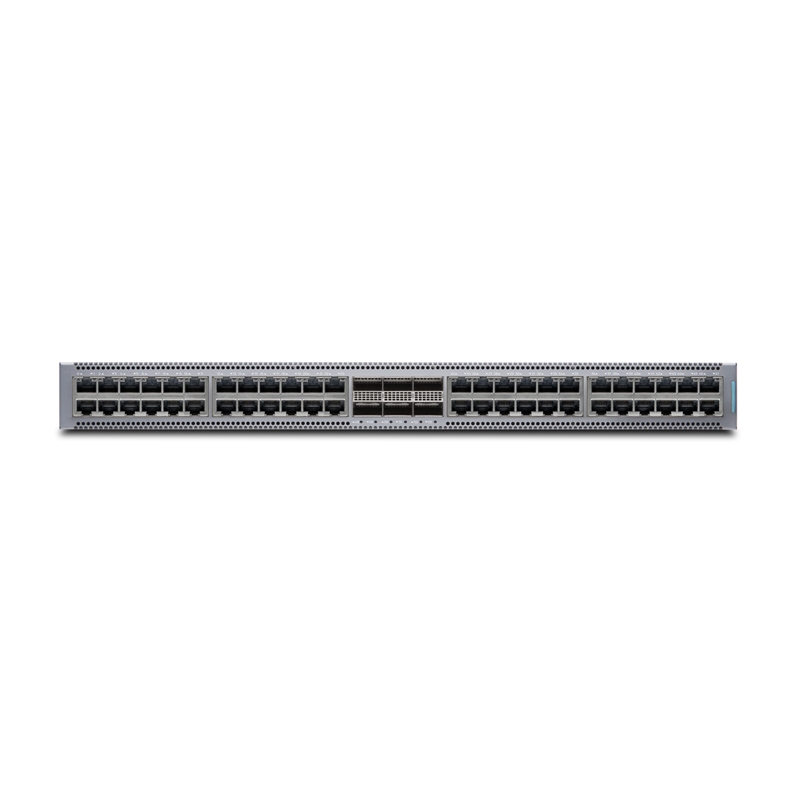-
Catalog
- Expert Recommend
-
- Explore Hot Brands Products Portfolio.
- Cisco Switches
- Aruba Wireless
- HPE Rack Servers
- Fortinet Firewalls
- Juniper Networking
- Try Tools to Select Right Products.
- Modules & Cards
- HPE Server Hard Drives
- Cisco Wireless APs & Controllers
- Check Hot Series of Top Brands.
- Cisco Switch Catalyst 9300
- HPE ProLiant Gen10 Rack Servers
- Fortnite Network Security Plateform
- View Top Products List to Order the Best.
- Best Networking Accessories
- Cisco Catalyst 8200 Series Edge Platforms & UCPE
- Network Attached Storages NAS
-
- Routers
- By Brands
- Cisco Routers
- Cisco Router ISR 4000
- Cisco Router ISR 1900
- Cisco Router ISR 2900
- Cisco Router ISR 3900
- Cisco Router ASR 9000
- Cisco Router ISR 800
- Cisco Catalyst 8200 Series Edge Platforms & UCPE
- Cisco Router ISR 900
- Cisco Router ASR 1000
- Cisco Catalyst 8300 Series Edge Platforms
- Cisco Catalyst 8500 Series Edge Platforms
- Cisco Router ASR 5000
- Cisco Router ASR 900
- Cisco 8000 Series Routers
- Cisco Router 10000 Series
- Cisco Router 12000 Series
- Cisco Router ISR 1800
- Cisco Router ISR 2800
- Cisco Router ISR 1100
- Cisco Industrial Routers
- D-Link Routers
- UBNT Routers
- By Categories
- Service Provider Edge Router
- Switches
- By Brands
- Cisco Switches
- Cisco Switch Catalyst 9200
- Cisco Switch Catalyst 9300
- Cisco Switch Catalyst 9400
- Cisco Switch Catalyst 9500
- Cisco Switch Catalyst 9600
- Cisco Switch Catalyst 1000
- Cisco Switch Catalyst 3850
- Cisco Switch Catalyst 3650
- Cisco Switch Catalyst 2960
- Cisco Catalyst Micro Switches
- Cisco Catalyst Compact Switch
- Cisco Nexus 3000 Series
- Cisco Nexus 5000 Series
- Cisco Nexus 9000 Series
- Cisco Nexus 7000 Series
- Cisco Industrial Ethernet 1000 Switches
- Cisco Catalyst IE3000 Rugged Switches
- Cisco Industrial Ethernet 2000 Switches
- Cisco Industrial Ethernet 4000 Switches
- Cisco Industrial Ethernet 5000 Switches
- Cisco Switch Catalyst 4500
- Cisco Switch Catalyst 4900
- Cisco Switch Catalyst 6800
- Cisco Switch Catalyst 3560
- Cisco Switch Catalyst 3750
- Cisco Switch Catalyst 6500
- Cisco Nexus 2000 Series
- Cisco Catalyst IE9302 Rugged Series
- Cisco Catalyst IE9303 Rugged Series
- Cisco Catalyst IE9304 Rugged Series
- Cisco Catalyst IE9305 Rugged Series
- Cisco Catalyst IE9316 Rugged Series
- Cisco Catalyst IE9317 Rugged Series
- Cisco Catalyst IE9318 Rugged Series
- Cisco Catalyst IE9319 Rugged Series
- Cisco Catalyst IE9320 Rugged Series
- Cisco Catalyst IE9321 Rugged Series
- Cisco Catalyst IE9322 Rugged Series
- Cisco Catalyst IE9323 Rugged Series
- HPE Switches
- Convergence Switches
- Aruba-switches
- Aruba Switch v2 Modules
- Aruba Switch v3 Modules
- Aruba Switch Accessories
- Aruba 2920 Series Switches
- Aruba Switches Transceivers
- Aruba OfficeConnect Switches
- Aruba 2530 Series Switches
- Aruba 2615 Switches
- Aruba 2620 Switches
- Aruba 2915 Switches
- Aruba 6300F Series Switches
- Aruba Switches Accessories
- Aruba 6400 Series Switches
- Aruba 6000 Series Switches
- Aruba Data Center Switches
- aruba-2540-series-switches
- Aruba 2930M Series Switches
- Aruba 3810 Series Switches
- Aruba Instant On 1930 Switches
- Aruba 6200F Series Switches
- Aruba 8320 Series Switches
- Aruba 6300M Series Switches
- Aruba 6100 Series Switches
- Dell Switches
- Dell Networking X Series Switches
- Dell Networking N1500 Switches
- Dell Networking N3000 Switches
- Dell Networking N4000 Switches
- Dell Networking S4048-ON Switches
- Dell Networking S4100-ON Switches
- Dell Networking S3000-ON Switches
- Dell Networking N1000 Switches
- Dell Networking N2000 Switches
- Dell EMC Networking PowerSwitch N3200 Series
- Dell EMC PowerSwitch N1100 Series
- Dell EMC PowerSwitch S series 1GbE switches
- Fortinet Switches
- Juniper Switches
- Juniper EX4300 Series Ethernet Switches
- Juniper EX4600 Series Ethernet Switches
- Juniper EX3400 Series Ethernet Switches
- Juniper EX3300 Series Ethernet Switches
- Juniper QFX5200 Series Switches
- Juniper QFX5100 Series Switches
- Juniper QFX3000 Series Switches
- Juniper Switch Modules & Cards
- Juniper Switch Licenses
- Ruckus Switches
- D-Link Switches
- UBNT Switches
- H3C Switches
- Extreme Switches
- Alcatel-Lucent Switches
- Mellanox Switches
- By Categories
- Access Switches
- Cisco Catalyst 9200 Switches
- Cisco Catalyst 9300 Switches
- Cisco Catalyst 9400 Switches
- Cisco Catalyst 2960 switches
- Cisco Catalyst Compact Switches
- Cisco Catalyst Micro Switches
- Cisco Catalyst 3850 Switches
- Dell Networking X Switches
- HPE 1810 Switches
- Juniper EX2300 Ethernet Switches
- Juniper EX3400 Ethernet Switches
- Dell EMC Networking PowerSwitch N2200 Series
- Dell EMC Networking PowerSwitch N3200 Series
- Dell EMC PowerSwitch N1100 Series
- H3C Access Switches
- SMB Switches
- Core and Distribution Switches
- Firewalls
- By Brands
- Cisco Firewalls
- Cisco ASA 5500 Series
- Cisco Firepower 1000 Series Appliances
- Cisco Firepower 2100 Series Appliances
- Cisco Firepower 4100 Series Appliances
- Cisco Firepower 7000 Series Appliances
- Cisco Firepower 8000 Series Appliances
- Cisco Firepower 9300 Series Appliances
- Cisco ISA 500 Series
- Cisco Security Manager
- Cisco Firepower Appliance Accessories
- Fortinet Firewalls
- Juniper Security
- Dell Firewalls
- Palo Alto Firewalls
- Palo Alto PA-5000 Series Firewalls
- Palo Alto PA-5400 Series Firewalls
- Palo Alto PA-400 Series Firewalls
- Palo Alto PA-3200 Series Firewalls
- Palo Alto Next-generation Firewalls
- Palo Alto PA-5200 Series Firewalls
- Palo Alto PA-800 Series Firewalls
- Palo Alto PA-7000 Series Firewalls
- Palo Alto PA-3000 Series Firewalls
- Palo Alto Firewalls Appliance
- Check Point Firewalls
- Wireless
- By Brands
- Cisco Wireless APs & Controllers
- Cisco WLAN Controller
- Cisco 1810 Access Point
- Cisco 1815 Access Point
- Cisco 1830 Access Point
- Cisco 1850 Access Point
- Cisco Catalyst 9100 WiFi 6 Access Point
- Cisco Catalyst IW6300 Series Heavy Duty Access Points
- Cisco 1560 Outdoor Access points
- Cisco 1570 Outdoor Access Point
- Cisco Antenna 2.4 5 5.8 GHz
- Cisco 1700 Access Point
- Cisco 2700 Access Point
- Cisco 3700 Access Point
- D-Link Wireless
- UBNT Wireless
- Extreme Wireless
- Aruba Wireless
- Networking Accessories
- Servers
- Storages
- Unified Communications
- Expert Recommend
Search
+1 (800) 870-9487
Mon-Fri 8am-5pm EST



















Log In